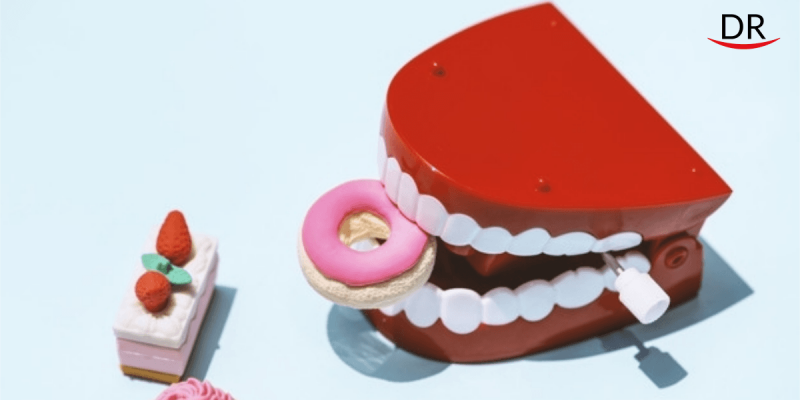Yes, dentists can very well help in diagnosing eating disorders too! And sometimes we may be the only medical professional who notices the symptoms that are indicative of an eating disorder. The regular scheduled greater frequency of dental visits can also be cited as one reason.
Eating disorders are characterised by denial and even shame, so immediate and open discussions are not forthcoming. When eating disorders have the highest mortality rate of all psychiatric illnesses, we must take this opportunity to better support such patients. It is not just a simple binge-and-purge habit.
We are all aware of one classic sign of eating disorders – dental erosion caused by intentional vomiting seen in bulimia. We might also well identify the signs of malnutrition in the oral cavity, but there are many knowledge gaps to be bridged in order to tackle such a sensitive issue!
Basic Information about Eating Disorders
They are defined as compulsive psychological disorders affecting individuals’ perception and relationship with their body and food, which results in distorted eating behaviours and habits.
3 most common eating disorders
- Bulimia nervosa (binge-purge)
- Anorexia nervosa (starvation)
- Binge-eating disorder (binging without purging)
Identifying individuals with eating disorders can be a challenge in a dental clinic sometimes. In light of this, the Sick, Control, One stone, Fat, Food questionnaire (SCOFF) was designed to aid in the diagnosis of patients with potential eating disorders.
SCOFF Questions
- Do you believe that you are fat when others say you are thin?
- Do you worry that you have lost control over how much you eat?
- Do you make yourself vomit because you feel uncomfortably full?
- Would you say that food dominates your life?
- Have you recently lost more than 15 pounds over a three-month period?
If a patient responds “yes” to two or more of the five SCOFF questions, there is a strong likelihood that an eating disorder exists.
Oral Manifestations of Eating Disorders
- Erosion of dental enamel
- Increased sensitivity to temperature. In extreme cases the pulp can be exposed and cause infection, discolouration, or even pulp death
- Enlargement of the salivary glands
- Dry mouth due to decreased salivary flow
- Reddened, dry, cracked lips
- Redness of the throat and palate
- Changes in the color, shape, and length of teeth. Teeth can become brittle, translucent and weak
- Oral sores with injury on palate, due to things that are used to provoke vomiting
- Impairment of taste perception
Management of Dental Problems
- Aesthetic restorations should not be done in active phase. It should be postponed till recovery phase. Only essential restorative work should be done, sufficient to limit tooth damage and keep the patient free of pain.
- A protocol to reduce caries risk should include in-office fluoride varnish applications.
- A durable, restorative technique that minimises the corrosive effects of acidic materials is needed to address immediate, aesthetic, psychological and functional demand
Patients with bulimia can further help their dental health by
- Using fluoride rinse or gel as well as using high fluoride toothpaste everyday
- Rinsing with a fluoridated mouthwash after vomiting, sugar-free xylitol-sweetened gum can also be used
- Immediate brushing should be avoided because the softened, demineralised tooth structure is more susceptible to erosion
- Tooth brushing should be gentle
- Clean inter-proximally daily, also clean their tongue to remove biofilm and acid residue
- Reduce consumption of acidic drinks and citrus fruits
- Use of artificial saliva/lozenges for dry mouth
- A mouthguard can be used to protect the dentition during vomiting
Conclusion
We can then initiate conversations with our patients, direct them to proper medical personnel. A general knowledge of eating disorders is crucial in the diagnosis and care of affected patients.
Don’t be angry if your patient continues to deny his/her eating disorder. Sometimes, the starting point in the recovery process can be the hardest hurdle to overcome.
Afterall, dentistry isn't just about changing lives, it is also about saving lives!
Sources
- Dental Treatment Protocol Courtesy of Renfrew Center Article
- Douglas L Caring for dental patients with eating disorders. Nature. 2015; 16-20. https://www.nature.com/articles/bdjteam20159.pdf
- Milosevic A Eating disorders and the dentist. Br Dent J. 1999; 186(3):109-113. doi:10.1038/sj.bdj.4800036




















Heard first time of such disorder.. very informative ????
Thanks…keep reading for more updates????????